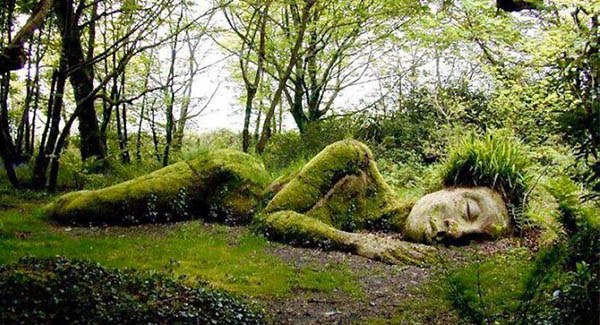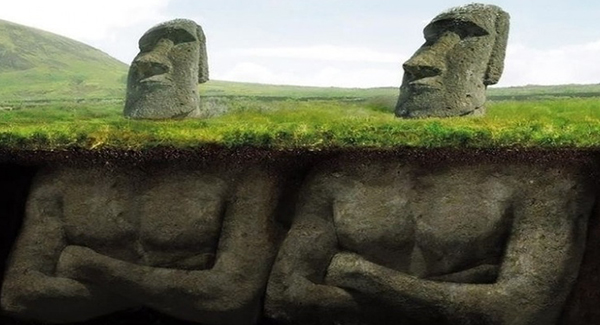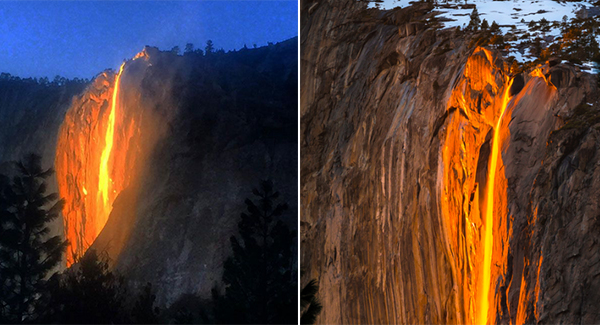Cornwall, in the Southwest of England, is a magical place steeped in fairytales and the legends of King Arthur. Here are the enigmatic Lost Gardens of Heligan, the largest garden restoration project in Europe covering 200 acres, which is ideal for adventurers, plant enthusiasts, and romantics.
The other star of the gardens is Mud Maid, who had originally been planned as a sort of mermaid. Plans changed when a member of the restoration team called her a Mud Maid and so the tail was scrapped. She is developed around a timber frame made from reclaimed wood on the property rather than a rootball as is the case with most rootballs. Then, screening that was stapled to the frame was molded around straw, cement, and clay to make her figure.
The sculpture was commissioned back in 1997 and has become an inseparable part of The Lost Gardens’ Woodland Walk ever since.
The so-called Mud Maid is a living sculpture. That means that her ‘clothes’ and ‘hair’ change with the seasons as grass, ivy, and moss grow and then wither. So you’ll see that she has a vibrant appearance in Spring and in Summer; and she will look completely different in Autumn and Winter.
This is the Mud Maid sculpture in The Lost Gardens of Heligan, in Cornwall

It’s a living sculpture…

…which means that its appearance changes with the seasons, as plants grow and then wither away




The Mud Maid represents a sleeping woman

The Mud Maid, along with the Hills’ other sculpture, The Giant’s Head, are meant to bring a sense of mystery to Heligan and to enhance the woodland experience.
The Lost Gardens of Heligan were established by the Tremayne family back in the 18th century and are one of the most famous British botanical gardens. Before World War I, the Tremanynes employed 22 gardeners to keep the estate prim and proper.
But, many of the gardeners left for the front after the war broke out. The estate deteriorated after World War I as the number of gardeners dropped.
The Hills’ living sculptures attract thousands of visitors to the 400-year-old gardens each and every year.
Here’s what the Mud Maid looks like in late Spring…

…and Autumn



